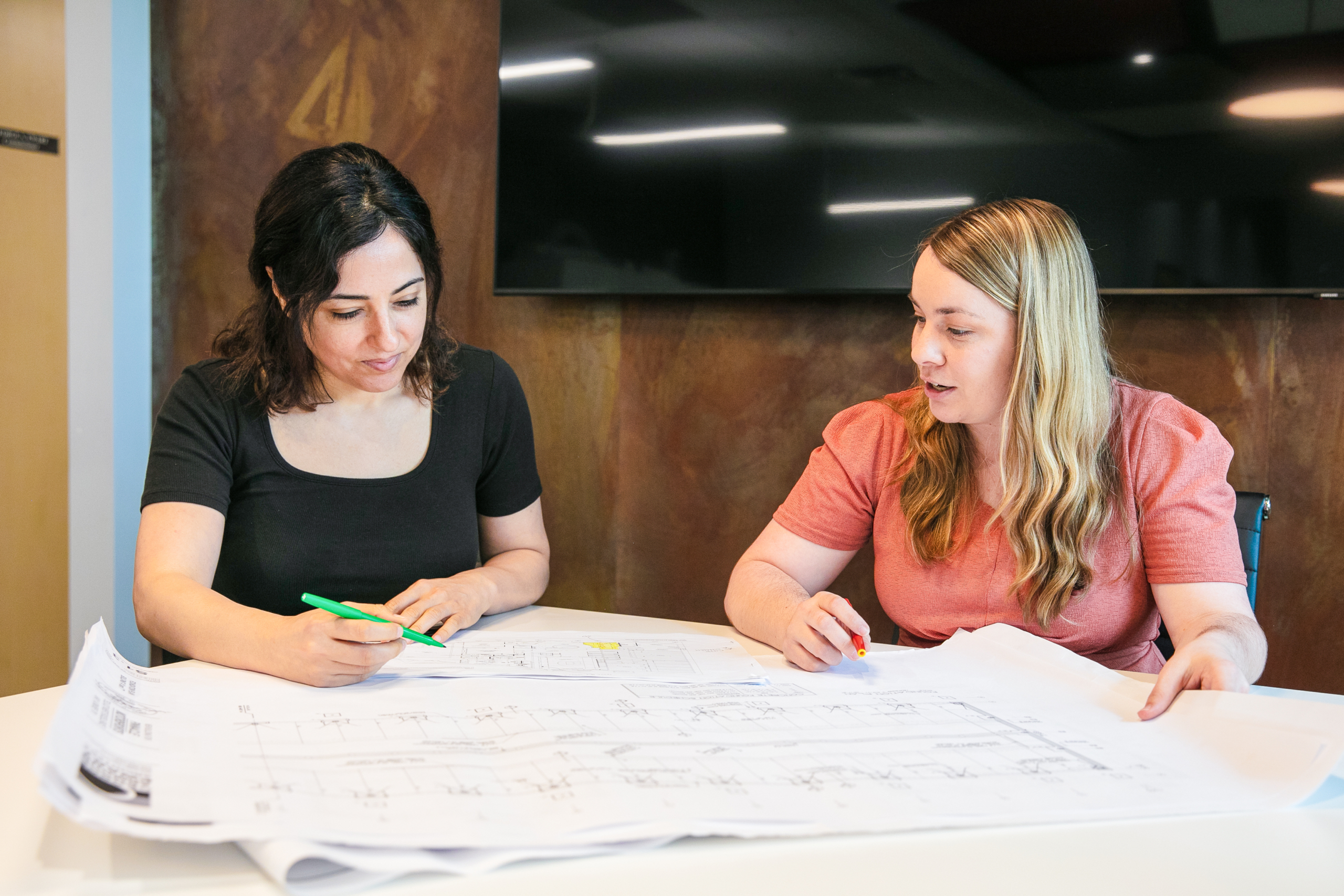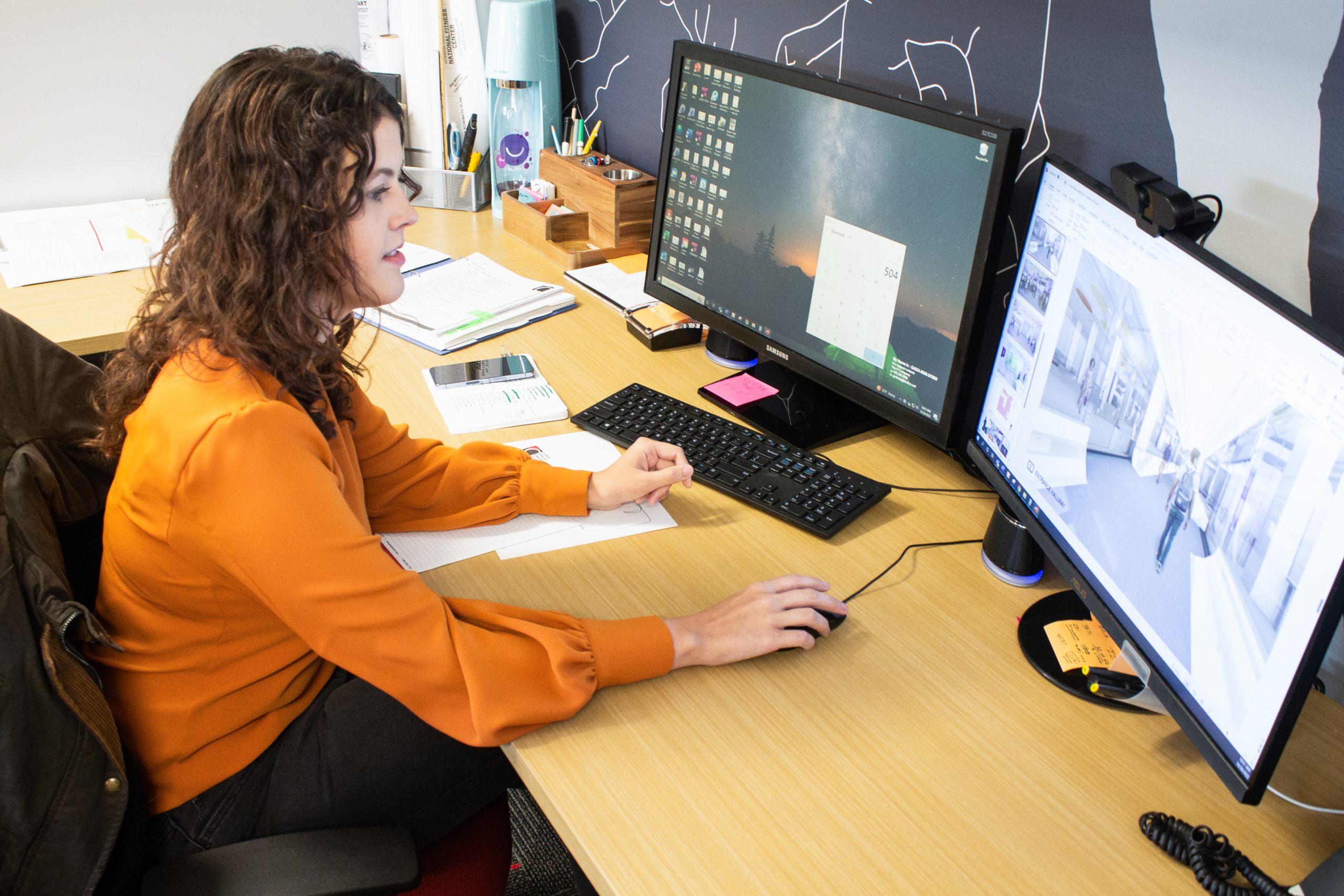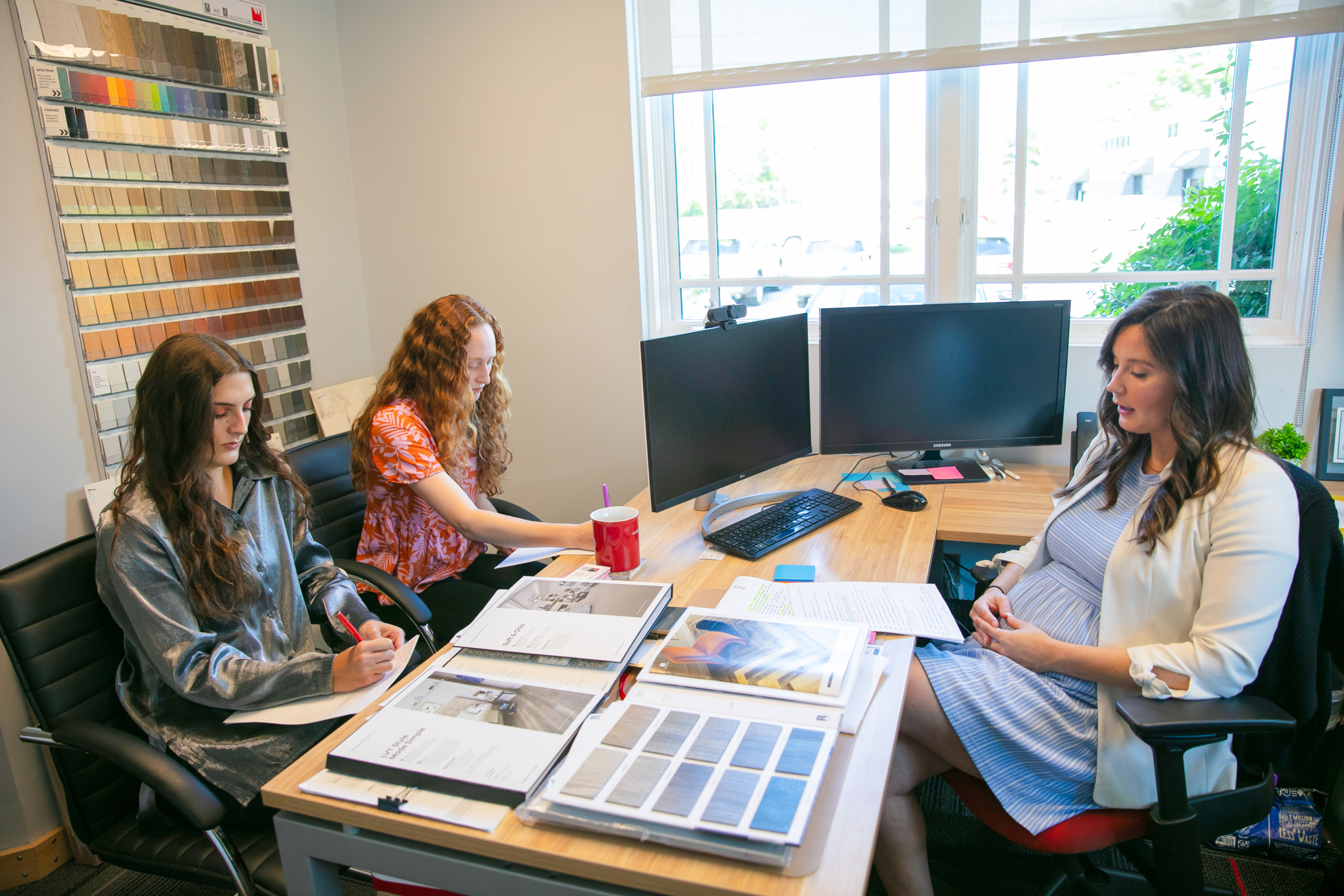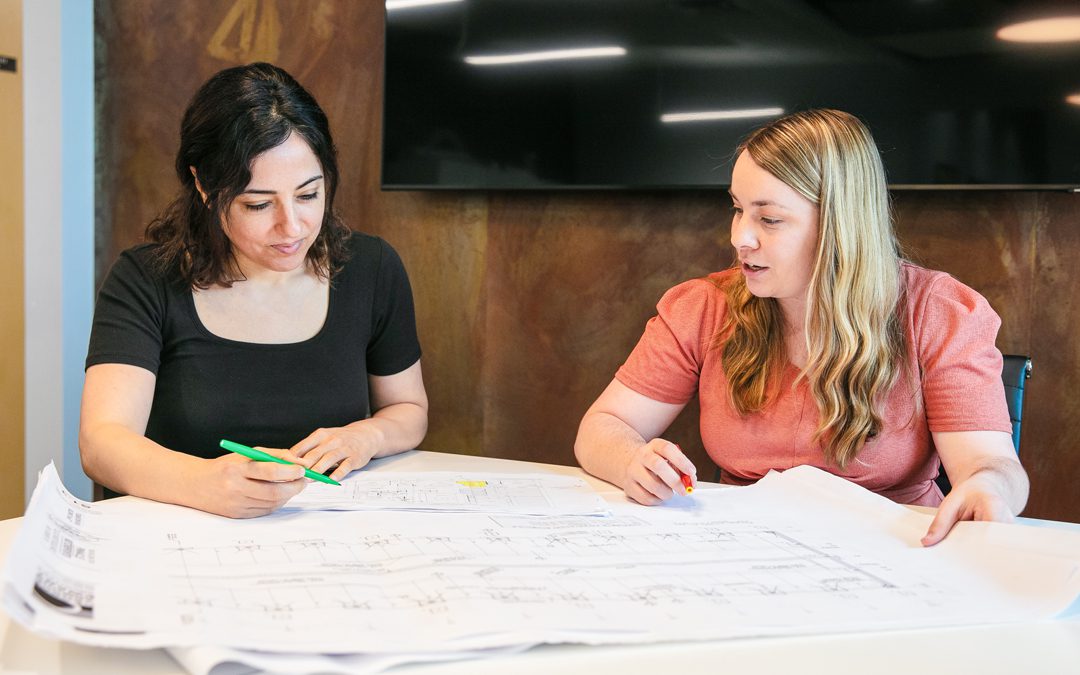How It Started vs. How It’s Going: A Look at Women in Architecture & Design
For Women’s History Month, our team is reflecting on how women have shaped and will continue to shape the field of architecture and design.
Before diving into our team’s thoughts, let’s take a broad look at some of the key moments for women in architecture since the 19th century.
How it Started
Women’s roles in the industry have come a long way since 1873, when Mary L. Page became the first woman in the U.S. to earn an architecture degree.
Since then, some historical milestones around women’s influence in the field include:
- 1881 – Louise Bethune opened the first woman-owned architecture firm in the States. She was also the first woman elected to the American Institute of Architects and built some of the country’s first structures made with steel frames and poured concrete slabs, according to Despina Stratigakos, professor of architectural history.
- 1894 – In New York City, Alice Hands and Mary Gannon formed the first female architectural partnership and designed better housing for “the city’s marginal populations,” says Stratigakos.
- 1905-1930’s – Mary Jane Colter from Minnesota designed buildings across the Southwest. Some people say she “set the standard for Southwestern design,” and inspired a style nicknamed “Parkitecture,” says Stratigakos.
- 1950 – Harlem’s Norma Merrick Sklarek graduated from Columbia with her architecture degree. Despite the industry’s unfriendliness to women at the time, Professor Stratigakos writes that “Sklarek rose to senior positions at major architectural firms, achieving many firsts for African American women.”
- 1963 – The first architecture critic in the U.S., Ada Louise Huxtable, began writing for The New York Times. In 1970, she earned a Pulitzer for distinguished criticism.
- 2004 – British-Iraqi architect, Zaha Hadid, was the first woman to win the Pritzker Architecture Prize.
- 2010 – Kazuyo Sejima, who designed the New Museum of Modern Art in New York City, became the second woman to win the Pritzker.
How It’s Going
Fast forwarding to today, we’re proud that our team at GAEA includes many talented women. For a more personal take on Women’s History Month, we asked some of those team members about the women who have influenced their careers. Here’s a look at what they said:
Which women in architecture & design have had a strong influence on your career?
For Jessica Vanderlaan, an Architectural Associate, it’s her former teacher:
“USF Associate Professor, Nancy Sanders, has shown me how femininity in both the architecture and design fields doesn’t equate to a lack of strength or boldness.”
Interior Designer Whitney White takes inspiration from renowned Interior Designer Kelly Wearstler:
“Her design approach is all about creating a sensory experience by layering colors, materials, and styles. She pushes the boundaries while paying tribute to a project’s history and place, inspiring me to think outside of the box and leave a mark on every project.”
For Abigail Pilcher, an Interior Associate, it’s Designer Beth Dadswell from Imperfect Interiors in London:
“Beth mixes and matches patterns, bold colors, and often uses wallpaper and intricate tiles in her designs. Her comfortable, homey interiors are contemporary and classic. Her style encourages playfulness in materiality and influences my own aesthetic.”

How has being a woman in this industry impacted your role or career journey so far?
Whitney gives her take:
“I’m lucky to have worked with a company and in a community where my voice is heard. It can be intimidating to be the only woman in the room or on a job site, which tends to be more male-dominated, so sometimes I feel the need to work a little harder to prove that I belong and have authority on a project. But I’m also lucky to work among a group of talented ladies who constantly encourage me and build each other up.”
Adding her thoughts, Abigail shares:
“Being a woman in this industry makes me feel powerful. Many of us are passionate about our design opinions and want our ideas represented, so working alongside other creative women and good communication with the entire team is key.”

How the Future Looks
We also asked our team to look ahead to the future of women in architecture:
How do you hope to see women shape the industry moving forward?
Jessica firmly believes:
“Women should see their differences as strengths. When shifting to this perspective, we can be confident and intentional in leveraging them. Ultimately, I look forward to the day where someone doesn’t say, ‘What a great female architect!’ but instead says, ‘What a great architect!’”
Abigail shares her insight:
“I hope to see women shape the industry through exploration of fabrication techniques. With technology now-a-days, I’d love to see more women, and people in general, push towards sustainably made fabrics, materials, and innovative ways to design with the environment in mind.”
Brooklyn also has a vision for women to lead the industry in sustainable design:
“I hope to see more women adapting design to fit the needs of our environment. I believe we’re very connected to nature and often feel the need to help. To achieve this, we need to keep changing the way we think about design and focusing more on green strategies.”
Women have a much larger role in architecture and design than during Louise Bethune’s time, but there’s still room for improvement. We look forward to seeing more opportunities for them, more growth, and – quite frankly – more women in the industry!

Join a Knoxville Firm Where Your Voice is Valued
Here at GAEA, we value the talents, voice, and leadership of everyone on our team. If you’re looking to join an inclusive team in architecture and design, we’d love to hear from you. Reach out on our site or email info@georgeewart.com to see if our firm is the right fit for you!

